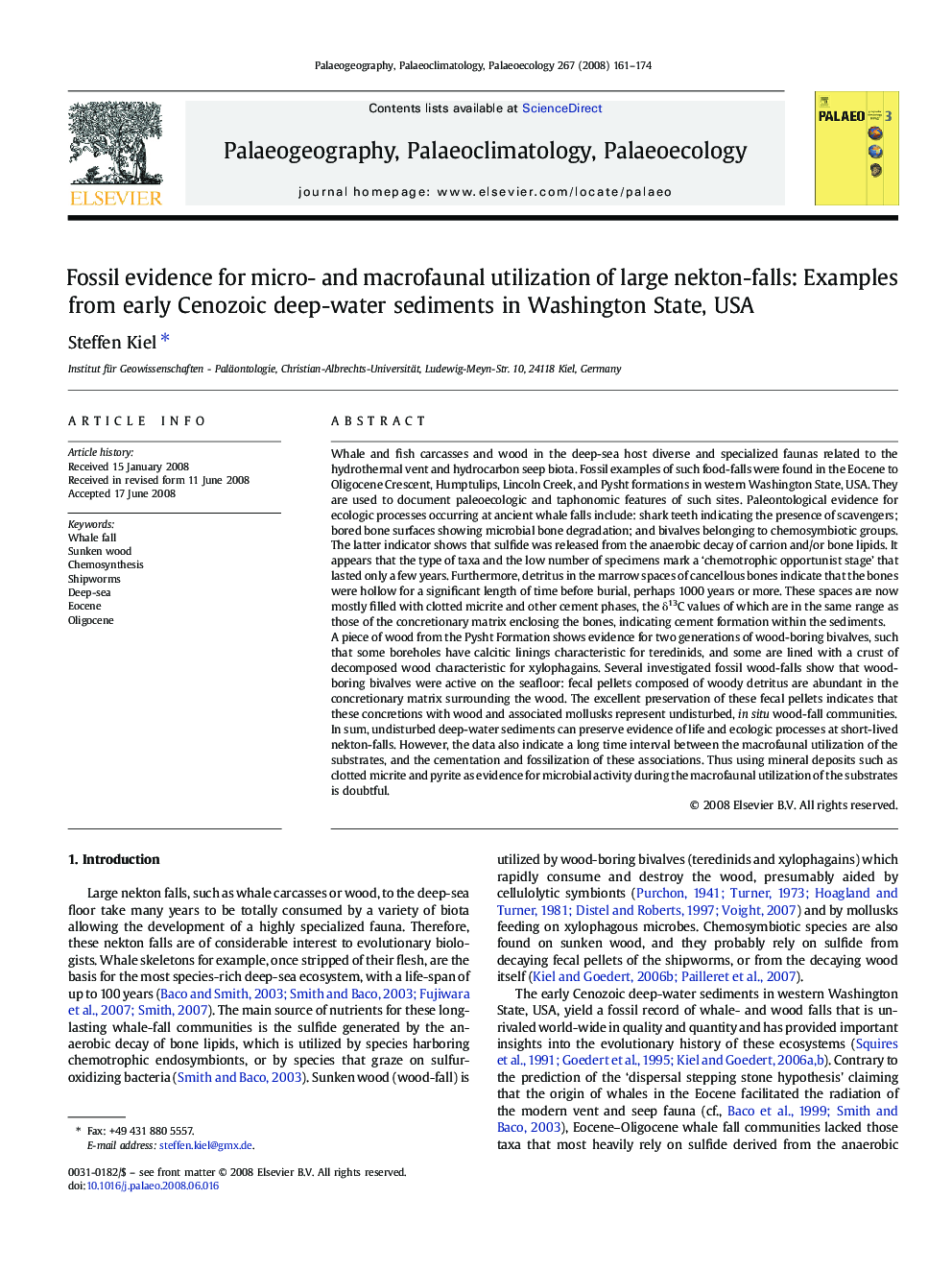| کد مقاله | کد نشریه | سال انتشار | مقاله انگلیسی | نسخه تمام متن |
|---|---|---|---|---|
| 4468465 | 1622319 | 2008 | 14 صفحه PDF | دانلود رایگان |

Whale and fish carcasses and wood in the deep-sea host diverse and specialized faunas related to the hydrothermal vent and hydrocarbon seep biota. Fossil examples of such food-falls were found in the Eocene to Oligocene Crescent, Humptulips, Lincoln Creek, and Pysht formations in western Washington State, USA. They are used to document paleoecologic and taphonomic features of such sites. Paleontological evidence for ecologic processes occurring at ancient whale falls include: shark teeth indicating the presence of scavengers; bored bone surfaces showing microbial bone degradation; and bivalves belonging to chemosymbiotic groups. The latter indicator shows that sulfide was released from the anaerobic decay of carrion and/or bone lipids. It appears that the type of taxa and the low number of specimens mark a ‘chemotrophic opportunist stage’ that lasted only a few years. Furthermore, detritus in the marrow spaces of cancellous bones indicate that the bones were hollow for a significant length of time before burial, perhaps 1000 years or more. These spaces are now mostly filled with clotted micrite and other cement phases, the δ13C values of which are in the same range as those of the concretionary matrix enclosing the bones, indicating cement formation within the sediments.A piece of wood from the Pysht Formation shows evidence for two generations of wood-boring bivalves, such that some boreholes have calcitic linings characteristic for teredinids, and some are lined with a crust of decomposed wood characteristic for xylophagains. Several investigated fossil wood-falls show that wood-boring bivalves were active on the seafloor: fecal pellets composed of woody detritus are abundant in the concretionary matrix surrounding the wood. The excellent preservation of these fecal pellets indicates that these concretions with wood and associated mollusks represent undisturbed, in situ wood-fall communities.In sum, undisturbed deep-water sediments can preserve evidence of life and ecologic processes at short-lived nekton-falls. However, the data also indicate a long time interval between the macrofaunal utilization of the substrates, and the cementation and fossilization of these associations. Thus using mineral deposits such as clotted micrite and pyrite as evidence for microbial activity during the macrofaunal utilization of the substrates is doubtful.
Journal: Palaeogeography, Palaeoclimatology, Palaeoecology - Volume 267, Issues 3–4, 1 October 2008, Pages 161–174